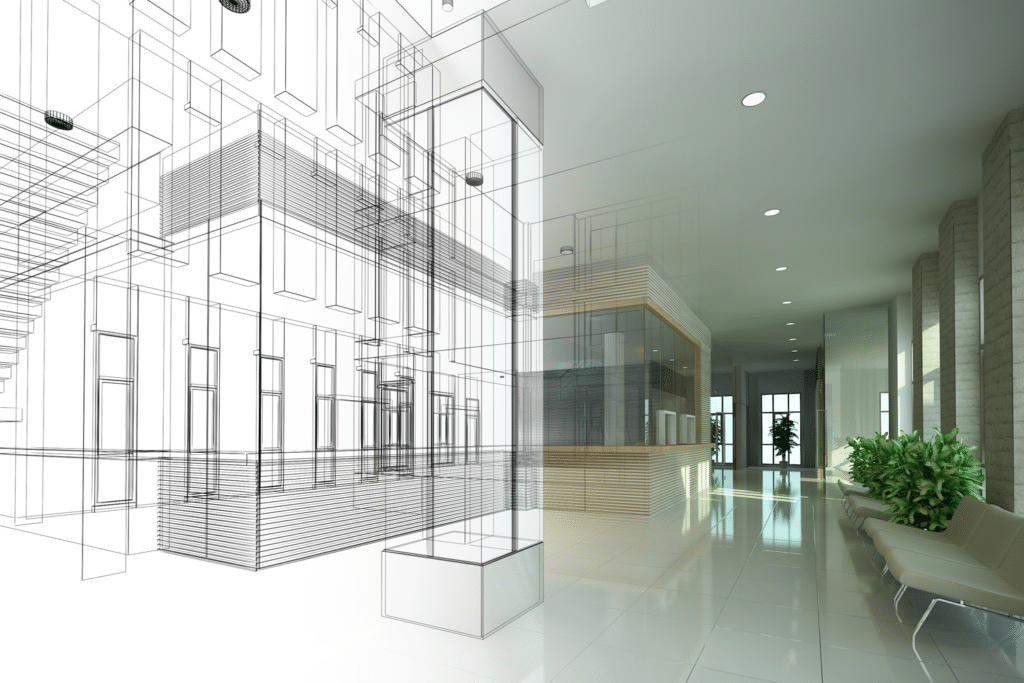
Here’s how design-build minimizes risk and workload
Here’s how design-build minimizes workload and risk
Savvy developers and investors have a secret weapon in their commercial construction toolbox, one which excels in two major ways. The secret: the design-build project delivery model.
No longer the closely guarded secret it once was, design-build is now the approach of choice for commercial developers who want to optimize their commercial construction projects. Far different from the approaches of old, design-build does away with the most common and costly missteps of the fragmented and siloed design-bid-build construction model, which engages multiple, separate project teams from different entities with differing goals and risks to manage for the portion of the project they own. Under this model, each entity and stakeholder is focused primarily on their respective piece of the project.
Conversely, design and build teams work as a single unit toward a shared goal of delivering on your project vision. The bottom line is this. As a result of its innovative approach to your project, design-build construction has two massive benefits: it minimizes risk, and it maximizes your investment. Here’s how.
How design-build minimizes risk and maximizes your investment
When it comes to design-build, every project stakeholder shares a single goal of the successful completion of your project on schedule, on budget and of high quality. Instead of a passing-the-buck climate, which can be common in design-bid-build project delivery, the design and build project approach fosters a collaborative environment where everyone from the designers, estimator, project manager, and job site superintendent works together to achieve the owner’s project goals.
How does design-build reduce risk for project owners?
The risks of commercial construction to the owner/developer are many. The list of liabilities is populated with potential barriers and challenges that impact your wallet. Among them are lending/financing challenges, plan approval and permit hurdles, supply chain issues, unforeseen construction site problems, vendor performance issues, and much more.
Under the design-build model of construction, many of these risks are owned by the design-build firm rather than the project owner/developer. While every project comes with an element of risk, this project approach can significantly reduce the liability shouldered by the developer. Instead, the design-build team, as the single contract holder, typically shoulders many of these risks.
A Southern Polytechnic State University study demonstrates how risk is shared under the design and build project delivery model. Their study showed the design-build firm typically shoulders risks like materials defects, work quantity and quality, safety, contractor competence, project costs, labor disputes, design issues, and defensive engineering.
Of course, every project is different, and the terms of your agreement may not reflect the results of this study. But you can rest assured the liability associated with your project will be in good hands when you choose a true design-build firm like DBS Group.
How does design-build maximize your investment?
In an era of post-pandemic construction costs (due to high inflation over the past two years) and a challenging lending environment, it’s more important than ever to engage a commercial construction partner who can maximize your investment to make the numbers work on projects. Working with a design-build partner is the answer.
A design-build partner will engage an experienced estimator at the onset of planning and design to collaborate with the balance of the team regarding all things related to pricing. This can include evaluating big-picture items such as building assembly (wood-framed, masonry, PEMB, precast, steel, etc.). I can also include evaluating specific materials and manufacturers to select the materials that meet the owner’s functional and quality goals while also meeting the project budget. Simply put, having an experienced estimator engaged to collaborate with the balance of the project team allows the owner to make real-time decisions during the design phase with confidence.
A design-build partner will also engage an experienced project manager at the onset of planning and design to collaborate with the balance of the team regarding phasing, schedule, and constructability. The construction industry continues to wrestle with supply chain challenges for some key materials and components that require proactive planning to maintain the owner’s schedule. Having an experienced project manager engaged will allow the project team to plan for long-lead materials and equipment to avoid schedule delays as well as having to pay a premium for specific materials and equipment.
There is a misconception that design-build doesn’t provide for a competitive bidding process, which is simply not true. Your design-build partner will facilitate a competitive bidding process at the vendor level to ensure that the owner benefits from competitive pricing while also ensuring that selected vendors can meet the owner’s project goals.
Ready to build? Design-build may be ideal for your next project.
When it’s time to build in La Crosse, Onalaska, Rochester, and the rest of the Upper Midwest, choosing the right commercial construction team for your build is key to your project success. The design and build project delivery model offers benefits that go far beyond the old-school approach to commercial construction. Contact us today to start reaping the rewards with our comprehensive pre-construction services.